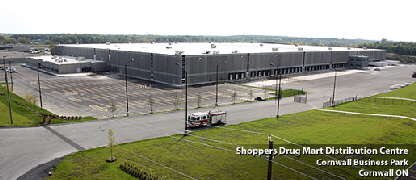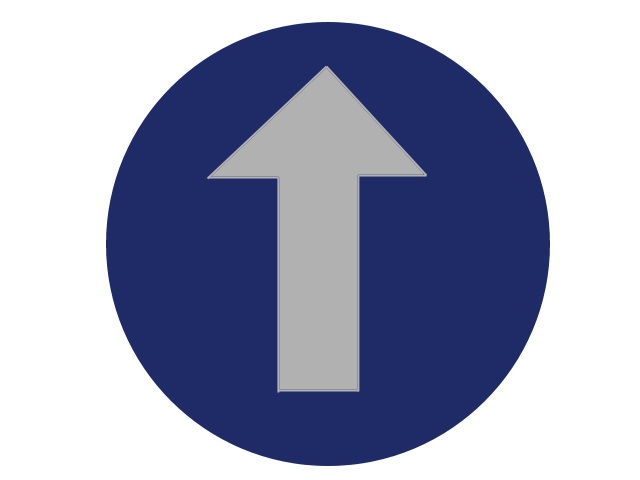|
Canadian Grocer Blog Entry: September 3, 2013 (here)
In July, 2013 it was announced that Loblaw Companies Ltd. would acquire Shoppers Drug Mart Corporation for $12.4 Billion. This deal was announced only one month after Sobeys' parent company, Empire Company Limited, reached a deal to buy 213 Safeway grocery stores in Western Canada for $5.8 billion. The Loblaw-Shoppers merger is being touted as a win for both firms as it provides Loblaw Companies with a best-in-class retail pharmacy business and Shoppers Drug Mart can expand its product variety to include Loblaw's private label and convenience food product lines. But how does the deal impact the supply chains for both firms and what efficiencies are enabled through the merger of their distribution networks? In this blog entry we set out to answer these questions.
First off, it is important to understand the fundamental differences between grocery distribution and retail drug distribution. We provide a short synopsis below for readers who may not be familiar with distribution operations.
- Grocery distribution centers process large multi-temperature store orders of Dry Grocery, Produce, Fresh Meat, Deli Meats, Dairy, Frozen Foods, General Merchandise (GM) and Health & Beauty Care (HBC). The vast majority of product being processed in the distribution center is in full case quantities meaning that the products are shipped in the same case format that the vendor supplies to the retailer. In other words, pallets come in and cases go out. For the most part, only Health and Beauty Care, Pharmacy, and General Merchandise ship in a less than full case format (i.e. 'split case'). Think of it as the 80/20 rule where 80% of the products ship through the warehouse as full cases and 20% ship as inner packs or retail units.
- The 80/20 rule also applies to retail drug distribution except that it is the exact opposite in that 20% of the products ship as full cases and 80% ship in less-than-case quantities. Retail drug stores are not able to order as much full case merchandise because they are smaller stores that have less shelf space per product as compared to a typical supermarket store. They also stock merchandise that has a higher cost of goods so stores order split cases to lower inventory assets at retail.
- The full case versus split case distinction is important to understand because the supporting distribution centers are designed very differently. For the most part, grocery distribution centers are designed as conventional facilities that support high volume multi-temperature full case throughput. Retail drug distribution centers also ship full cases, but they tend to have material handling systems designed to support split case picking operations (e.g. conveyor belts).
- Of equal importance to understand is the outbound transportation characteristics of Retail Grocery versus Retail Drug. Grocery supermarkets typically receive deliveries from their supporting distribution centers that are loaded onto 48' or 53' full size trailers that are fully cubed out. On the other hand, retail drug stores are often smaller format stores located in urban cities such that there are constraints on the type and size of truck that can be used to service the store. Thus a mix of smaller delivery trucks and larger trailers is common within retail drug store distribution.
Unlike the Sobeys-Safeway deal where two grocery retail companies are being merged, the Loblaws-Shoppers deal provides less distribution network synergy because of these differences between the two distribution environments. Having said this, let's take a closer look at the distribution infrastructure overlap between Loblaw Companies and Shopper Drug Mart.
Shoppers Drug Mart Distribution Infrastructure
The most recent information that we have is that Shoppers Drug Mart operates from five (5) distribution centers totaling 2.08 Million square feet across Canada. From East to West:
- In Moncton, NB, Shoppers operates a 230,000 sq ft distribution center in the Moncton-Caledonia Industrial Estates. The facility was originally opened with 150,000 sq ft in 1995 and was later expanded by 80,000 sq ft. in 2005. This facility services stores throughout the Maritimes.
- In Cornwall, ON, Shoppers operates from a 550,000 sq ft distribution center that was opened in October, 2010. The facility services stores in Eastern Ontario and Quebec.
- In Mississauga, ON, Shoppers operates from a 711,000 sq ft distribution center that services the Greater Toronto Area and Western Ontario. This facility was last expanded by 80,300 sq ft in 2006.
- In Calgary, AB, Shoppers operates from a 415,000 sq ft distribution center in Airdrie that was last expanded in 2007. This facility services stores across AB, SK and MB.
- In Richmond, BC, Shoppers services BC stores from a smaller 175,000 sq ft facility.
It is our understanding is that all of the Shoppers Drug Mart distribution centers are outsourced to the third party logistics firm Matrix Logistics Services, which is an operating division of Exel Logistics.
Loblaw Companies Distribution Infrastructure
The most recent information that we have is that Loblaw operates from nineteen (19) distribution centers totaling 7.2 Million square feet across Canada. Our information is a little dated so the figures may not be exact but they are close for the purposes of this article. From East to West, Loblaw's distribution centers are:
- In the Maritimes, Atlantic Wholesalers Ltd (a wholly owned food wholesale subsidiary of Loblaw Companies) operates two distribution centers in Moncton: A 118,000 sq ft dry facility; and also a 185,000 sq ft. freezer/perishables facility which opened in 2010. As well, Atlantic Wholesalers operates a 215,000 sq ft DC in Halifax, NS; and National Grocers operates a 125,000 sq ft facility in Mount Pearl, NF.
- In Quebec, Loblaw's Provigo subsidiary operates distribution centers in Boucherville, Laval, Loretteville, and Montreal (St-Laurent) totaling approximately 1.96 Million sq ft.
- In Ontario, Loblaw operates three main food distribution centers in: Ajax (1,035,000 sq ft full-line facility operated by Atlas Logistics Services that was last expanded in 2010); the Cambridge Maple Grove facility (828,000 sq ft); and National Grocers in Ottawa (372,600 sq ft).
- In Western Canada, Loblaw operates a 458,000 facility in Winnipeg, a new 500,000 sq ft facility in Regina, SK (which is outsourced to 3PL Atlas Logistics Services); 2 facilities in greater Calgary; 1 distribution center in Edmonton; 1 facility in Pitt meadows, BC; and 1 facility in South Surrey, BC; for a total of roughly 2.4 Million square feet.
As can be seen, Loblaws operates a mix of regionally-based wholesale and retail grocery distribution centers under different corporate subsidiaries with some operations that are outsourced to 3PLs.
Assessment of Distribution Center Consolidation Synergies
Our assessment is that there is a very low probability that the Shopper's / Loblaw distribution network will undergo any major transformation due to facility consolidation. Why is this?
- In Moncton, both firms operate distribution centers but Loblaw operates a wholesale grocery distribution center that supplies full-line groceries to stores across the Maritimes. The Shoppers distribution facility is much smaller and is dedicated to servicing retail drug stores in the same market area. The synergy here will be that Atlantic Wholesalers Ltd can purchase and supply dry grocery merchandise for the Shopper's warehouse to gain more volume and better purchasing brackets; and Shoppers can likely purchase and supply non-food and pharmaceuticals for the grocery supermarkets.
- Shoppers Drug Mart just opened a new DC in Cornwall, ON and while Loblaw has been rumored to have a distribution project in this area, to the best of our knowledge, this project has been placed on hold. No change expected here.
- Shoppers Drug Mart has a large distribution operation in Mississauga that could eventually play a role in servicing Loblaw stores with non-food and pharmaceuticals products and similarly, Loblaw operates food distribution centers in Ajax and Cambridge that will likely supply grocery merchandise to Shoppers stores. All in all, we see this distribution center consolidation as a low probability event and the main synergy being the cross-supply between the firms to expand the variety of private label merchandise available at both firm's retail stores.
- The same theme holds true at Calgary and Vancouver where similar situations exist on a smaller scale. While there may be a consolidation opportunity in Calgary for example, we view this as being a low probability event because the reduction in operating expenses will likely be insufficient to justify the labor turmoil.
The main supply chain synergies coming out of this merger have more to do with (1) increasing retail sales of private label products that generate higher margins; (2) leveraging increased purchasing power within the consolidated corporate entity; (3) reduction in back office white collar labor expense where common overlap exists at corporate headquarters; and (4) developing a common IT infrastructure that reduces the cost and complexity of running two firms on different systems and platforms.
The real financial benefit arising from this merger has to do with the ability for Loblaws stores to be supplied with pharmaceuticals products from Shoppers Drug Mart rather than through the wholesale distribution channel. While the wholesale distributor markup is relatively small as a percentile, the cost of goods for pharmaceuticals is very high relative to the other goods being moved through the Loblaw supply chain. By self distributing pharmaceuticals, Loblaw Companies Ltd. has a sizable opportunity to increase gross margins.
As always, these comments reflect the unbiased opinions of the author and are not based on any inside information to speak of.
Marc Wulfraat is the President of MWPVL International Inc. He can be reached by clicking here. MWPVL International provides supply chain / logistics network strategy consulting services. Our services include: supply chain network strategy; distribution center design; material handling and automation design; supply chain technology consulting; product sourcing; 3PL Outsourcing; and purchasing; transportation consulting; and operational assessments.

|